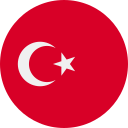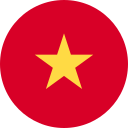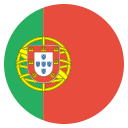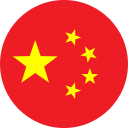to return
01
戻る, 帰る
to go or come back to a person or place
Intransitive: to return to a place or state

例
After a long vacation, it 's time to return home.
長い休暇の後、家に帰る時間です。
The migratory birds return to their nesting grounds every spring.
渡り鳥は毎年春に営巣地に戻ります。
02
返す, 戻す
to send, give, or bring something back to someone or to a place
Transitive: to return sth point in time

例
Sarah borrowed a book from the library and promised to return it next week.
サラは図書館から本を借りて、来週返すと約束しました。
After repairing my laptop, the technician will return it to me by the end of the day.
私のノートパソコンを修理した後、技術者はその日の終わりまでに私にそれを返します。
03
返品する, 返却する
to bring back a purchased item to the seller in order to receive a refund
Transitive: to return a purchased item

例
After discovering a defect in the new electronic gadget, Sarah decided to return it to the store for a refund.
The shoes did n't fit properly, so Mark had to return them.
04
戻る, 帰る
to go back to a specific situation or condition
Intransitive: to return to a state or level
例
As the economy struggled, many businesses faced challenges and had to find innovative ways to return to profitability.
経済が苦戦する中、多くの企業が課題に直面し、収益性に戻るための革新的な方法を見つけなければなりませんでした。
After a period of intense stress, Sarah practiced mindfulness to return to a state of calm and relaxation.
激しいストレスの期間の後、サラはマインドフルネスを実践して、穏やかでリラックスした状態に戻りました。
例
The annual meteor shower is expected to return next month.
年間の流星群は来月戻ると予想されています。
The popular festival, which had been on hiatus for several years, is set to return with a grand celebration
数年休止していた人気のフェスティバルが、盛大な祝賀とともに復活する予定です。
例
In his presentation, the speaker frequently returned to the central theme, emphasizing its significance.
彼のプレゼンテーションでは、スピーカーは頻繁に中心的なテーマに戻り、その重要性を強調しました。
The author masterfully crafted the novel, skillfully returning to key plot points.
著者は小説を巧みに作り上げ、プロットの重要な点に巧みに戻りました。
07
戻る, 再び現れる
(of feelings or thoughts) to reoccur or resurface
Intransitive
例
After a period of healing, the sadness began to return as the anniversary of the loss approached.
癒やしの期間の後、喪失の記念日が近づくにつれて悲しみが戻り始めました。
In times of stress, old insecurities tend to return.
ストレスの多い時には、古い不安が戻ってくる傾向があります。
08
返答する, 応答する
to respond to a statement, question, or remark
Transitive: to return with a response | to return to a question or remark
例
The teacher posed a challenging question, and Sarah hesitated briefly before returning with a response.
先生は難しい質問を投げかけ、サラは少し躊躇してから返答しました。
When confronted with the evidence, the suspect chose to remain silent and did not return with an alibi.
証拠を突きつけられ、容疑者は沈黙を選び、アリバイで返答しませんでした。
09
利益を生む, 収益をもたらす
to make a profit, often in the context of investments, business ventures, or financial activities
Transitive: to return a profit or growth
例
The investor carefully diversified their portfolio, aiming to return a consistent profit over time.
投資家は、時間をかけて一貫した利益を生み出すことを目指して、慎重にポートフォリオを分散させました。
The company launched a new product line, expecting it to return significant profits.
会社は新しい製品ラインを立ち上げ、それが大きな利益をもたらすことを期待しています。
10
発表する, 宣告する
to formally state or provide a decision, verdict, or response in answer to a specific request
Transitive: to return a verdict
例
The judge is expected to return a verdict in the trial after carefully considering all the evidence presented.
裁判官は、提示されたすべての証拠を慎重に考慮した後、裁判で判決を返すと予想されます。
The parole board will carefully review the inmate 's case and return a decision regarding early release.
仮釈放委員会は受刑者のケースを慎重に検討し、早期釈放に関する決定を返すでしょう。
11
提出する, 報告する
to submit or present a report, document, or similar item to someone in authority
Transitive: to return a report to an authority
例
The team worked on the project and is ready to return the report to the department head for assessment.
チームはプロジェクトに取り組み、評価のために部門長にレポートを提出する準備ができています。
The accountant completed the financial audit and returned the detailed findings to the company's CFO.
会計士は財務監査を完了し、詳細な調査結果を会社のCFOに提出しました。
12
再選する, 再び選ぶ
to elect or choose a person or political party to hold a position in office
Transitive: to return a political figure or party
例
In the upcoming election, voters are expected to return the incumbent mayor to office.
今度の選挙では、有権者が現職の市長を再選すると予想されています。
The citizens were eager to return the experienced senator to office.
市民は経験豊富な上院議員を再選することを熱望していた。
13
返す, 応える
to do, say, or feel something in response to the same action, remark, or feeling from others
Transitive: to return an action, remark, or feeling
例
He did not return her love.
彼は彼女の愛に応えなかった。
It 's time we returned their invitation.
彼らの招待に返礼する時が来ました。
Return
01
帰還
a coming to or returning home

02
納税申告書, 所得申告
document giving the tax collector information about the taxpayer's tax liability
03
帰還, 復帰
the occurrence of a change in direction back in the opposite direction
04
返却, 回復
getting something back again
05
帰還, 復帰
the act of going back to a prior location
06
収益, 所得
the income or profit arising from such transactions as the sale of land or other property
07
返答, 返事
a quick reply to a question or remark (especially a witty or critical one)
08
戻り, 再発
happening again (especially at regular intervals)
09
返球, リターン
the act of hitting the ball back to the opponent after it has been served or hit by the opponent in racket sports like tennis and table tennis
例
He struggled to anticipate his opponent 's return.
彼は相手のリターンを予測するのに苦労した。
She practiced her returns to improve her consistency.
彼女は一貫性を向上させるためにリターンを練習した。
10
返還, 帰還
a reciprocal group action
11
帰還, 再出現
the act of someone appearing again
12
返品, 未販売書籍の返品
the unsold books that are returned by retailers or distributors to the publisher or wholesaler for credit or refund
13
往復, 往復チケット
a ticket for a journey from one place to another and back again
Dialect British
British
例
She bought a return for her trip to London.
彼女はロンドンへの旅行のために往復チケットを買いました。
Is it cheaper to get a return or two one-way tickets?
往復チケットと片道チケット2枚、どちらが安いですか?




























